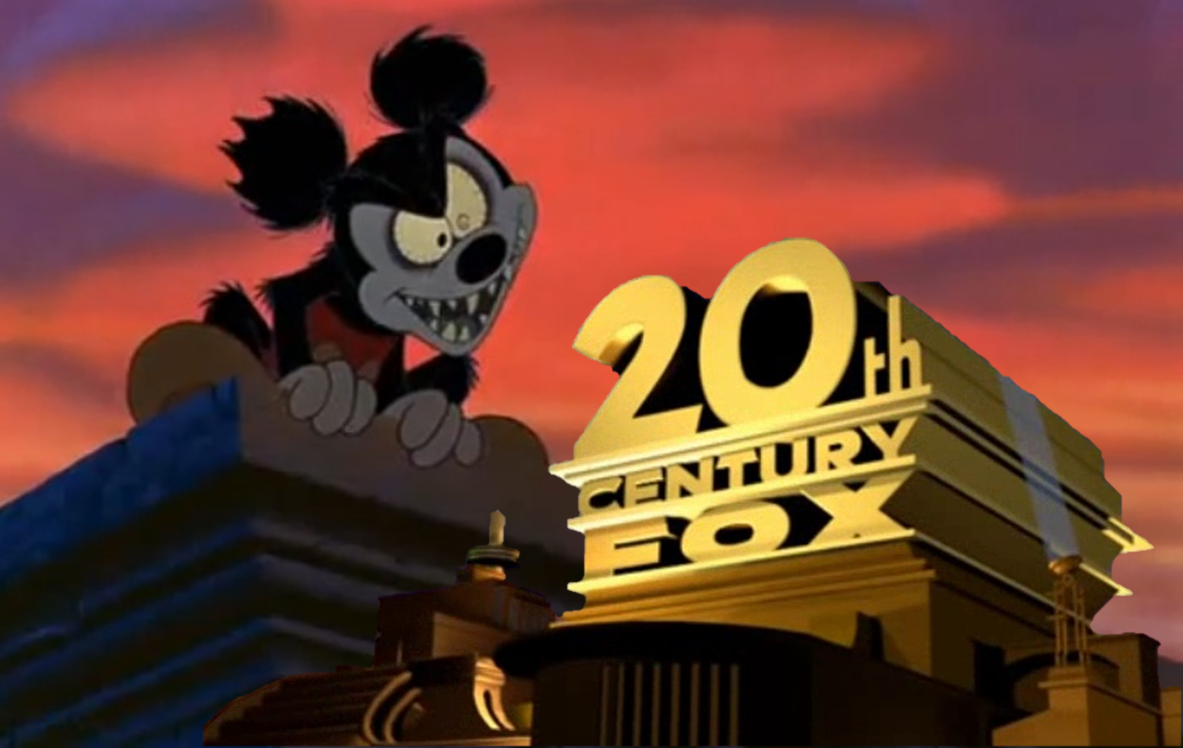
This is the first in a two-part exploration of the Disney-Fox deal. Part two can be found here.
In July of 2018, the Walt Disney Company acquired 21st Century Fox, as well as its many assets in film, television, and streaming services, for a reported $71.3 billion. This should be no surprise, as Disney has been a face for cold American corporatism for decades. The squeaky clean façade Disney desperately upholds in the face of their relentless pursuit of capital has made them an easy target for both harmless lampooning and legitimate criticism. Unfortunately, conversations about media are swamped by a nostalgia-fueled pop-culture, further amplified by social media echo chambers. Whereas many fans will worship Disney’s purchase in hopes of the Fox-owned X-Men getting name dropped in Avengers 7: The Quest for More Money (2026), this acquisition should instead be met with grave concern about the effect a modern monopoly may have on the quality of future art across the entertainment industry.
The Moneyman’s Laundry List
Since rising to the seat of CEO of the Disney in 2005, Bob Iger’s major claim to the Disney company legacy has been a series of acquisitions met favorably both publicly and financially. In 2006, Disney purchased Pixar from then-CEO Steve Jobs for an estimated $7.4 billion. Disney’s 12-year contract as Pixar’s distributor would soon expire, so it made sense that Disney would want to prevent this successful animation team from being swayed by competition. Clearly, the best way for the Disney Company to both maintain their closeness and reconcile their strained relationship was for Pixar to relinquish complete control to The Mouse. Though the acquisition itself goes unremembered by most moviegoers, the Pixar’s resulting growth remains unmistakable.
Three years later, Disney acquired Marvel Entertainment for roughly $4.24 billion. Though the deal didn’t dissolve previous licensing contracts with Universal Parks & Resorts, 20th Century Fox, or Sony, it allowed Disney to grasp firm hold of the financial success of Jon Favreau’s Oscar nominated Iron Man (2008). Enthusiasts erupted in fanfare with the announcement of further film projects inspired by Marvel IPs, culminating in a crossover event that would bring fan-favorites to the screen in a new, exciting way. Yet again, the acquisition was a success.
Seemingly unsatisfied, Disney acquired Lucasfilm for an estimated $4.05 billion in 2012. They announced mainline sequels and spin-offs of both film and TV proportions to the adored Star Wars franchise, driving fans absolutely ballistic with glee. The success of the Lucasfilm acquisition has grown so great, fans hungrily count down until the annual release of new Star Wars merchandise. Christened by Disney as “Force Fridays”, these waves of goods boosted their merchandise sales by 4.4% in 2017.
To put it plainly, Disney has birthed its own personalized Black Friday cash-surge.
At the end of 2017, Disney was still being driven by the momentum. The company announced intentions to seize Fox, whose assets spell another financial boom for an already massive company. This move begs a question to hardcore, lifetime fan of Disney: What work exactly has the Disney Company done to actually earn its gigantic surge in capital? These acquisitions have merely siphoned cash away from Disney’s disadvantaged competitors, and as fans may know, Disney’s past is the best indication for why the company needs competition to remain one of the film industry’s best creative forces.
The Day Disney (almost) Died
In the 1980s, the Walt Disney Company was under dramatic strain on all fronts. After conflicts with the company in 1979, Disney animator Don Bluth left the company and produced a string of animated films, including The Secret of NIHM (1982), An American Tail (1986), and The Land Before Time (1988), all of which garnered critical and financial acclaim. Meanwhile Disney, in the midst of their Dark Ages, floundered amid a string of hit-or-miss films while 70% of their total revenue trickled in from their stake in the theme park industry. The situation was so dire, financiers of the Disney Company attempted a hostile takeover to carve off and sell what was left of the company.
In walks then-president and CEO of Paramount Pictures, Michael Eisner. In a final effort to save the company from total dissolution, Disney called on Eisner’s film expertise to revitalize the company, gifting him the throne of Disney CEO. The initial result of Einer’s insight and leadership was marked success. Eisner used Disney’s subsidiary distributor, Touchstone Pictures, to pump out hits like Good Morning, Vietnam (1987), Who Framed Roger Rabbit? (1988), and Dead Poets Society (1989), while dipping their toes in TV distribution, finding success in shows like The Golden Girls. Disney Animation entered its Renaissance, producing back-to-back hits through The Little Mermaid (1989), Beauty and the Beast (1991), Aladdin (1992), and The Lion King (1994), films whose success and acclaim rival the original Disney classics. They produced beloved Saturday morning cartoons, brought the ABC network and ESPN into their fold, and further expanded their theme parks across the world. As a result of Eisner taking the risk of allowing the passion and creativity of Disney’s talented artists to take precedent to safe business tactics, the legacy of this remarkable success was actually earned.
The Mouse’s Stranglehold
Let’s put into perspective how much of the market Disney profits from if the Fox deal is approved. By combining film revenue from Disney, Pixar, Marvel, and Lucasfilm productions with revenue from Fox, Disney’s grubby little rat paws will cling to an estimated 30% of the film market. This means the same company that has barred critics from advanced screenings as punishment for negatively reviewing previous releases will be in control of one third of the film industry.
Tapping into the streaming service market, Disney plans to launch the Disney+ streaming service, the soon-to-be exclusive home for all things Disney, Marvel, and Lucasfilms. Additionally, through Fox, the Disney Company will own 30% of Hulu. This is only a fraction of the streaming market compared to the potential gains in the film department, but by shifting Netflix exclusive shows such as Daredevil over to their new service alongside their exclusive content, that fraction has more than enough room to outgrow competition.
For those still skeptical of how vital a role competition plays in Disney’s production of great art, look no further than their decisions in the theme park industry in the last decade. Prior to the opening of Universal’s Wizarding World of Harry Potter in 2010, the Orlando Disney parks were arguably being neglected. Half of Disney’s Hollywood Studios was a movie backlot where no movies or television series had been recorded since 1999, and from 2007 to 2016, Epcot didn’t open a single new ride. Once Universal opened its Harry Potter land however, fans and critics alike finally saw Universal as a proper competitor to Disney. Heated by the competition, Disney immediately began to work on improving and expanding its Orlando parks. Its most prominently announced lands are themed after James Cameron’s Avatar (2009) and the Star Wars series, both a direct response to the desire to be immersed in fantastic worlds that was created by Universal’s Harry Potter expansion. Since opening, Pandora: The World of Avatar at Disney’s Animal Kingdom has rocked guests and critics alike, and the upcoming Star Wars: Galaxy’s Edge land promises to revolutionize theme parks in ways never seen before.
The point is this: competition produces great art. The fire lit by Bluth in the 80s resulted in the Disney renaissance, and the surprise blow dealt by Universal’s Harry Potter land has led to Disney doing all it can to innovate today in its theme parks. Despite this, if Disney continues to swallow more and more of the film market, there’s a very real risk Disney won’t have to try to earn your dollar- and Disney has zero obligation to adhere to standards of quality if inferior products still produce big bucks. If a day comes where the film industry suffocates amidst a sea of the same uncreatively repackaged story, lacking the risk-making innovation that all markets need to impress and survive, make no mistake: the culprit wears Mickey ears.
Part two of the Disney-Fox dissection can be found here.
 George Ibarra is a Senior at Florida International University, pursuing a Bachelor’s Degree in English with a minor in Sociology, along with Certificates in Exile Studies and Film Studies.
George Ibarra is a Senior at Florida International University, pursuing a Bachelor’s Degree in English with a minor in Sociology, along with Certificates in Exile Studies and Film Studies.
